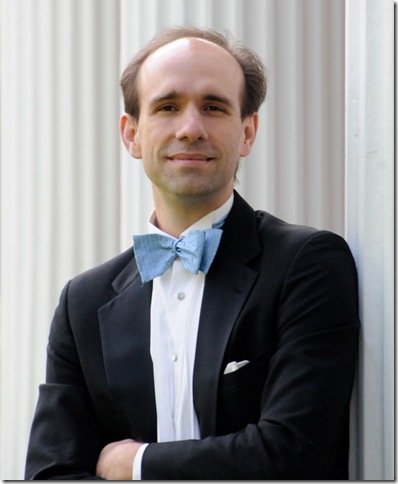A mostly Russian program featuring a stellar pianist and an important symphony made a strong impression on what appeared to be a growing and enthusiastic audience in Delray Beach last week for the South Florida Symphony.
The Feb. 3 concert at the Delray Beach Center for the Arts’ Crest Theatre featured American pianist Christopher Taylor in the Third Piano Concerto (in C, Op. 26) of Sergei Prokofiev, one of the most popular of all 20th-century piano concertos. Taylor, a longtime professor of piano at the University of Wisconsin’s flagship campus in Madison, is a Cliburn bronze medalist and a well-regarded musician who’s played with the world’s top orchestras.
The first movement of this concerto requires the pianist to be playing almost constantly, and athletically, as the soloist weaves in and out of the orchestral fabric, soaring above it for solo passages but almost as importantly providing a steady perpetual-motion pulse that explains why early auditors of this composer’s work liked to use motor similes to describe it. It is nothing less than an engine that rarely stops running, but if it’s to make music, it can’t sound like a stamping machine.
Fortunately, Taylor played it with suppleness as well as strength, and while he gave the big bass octaves in the transition to the second subject plenty of wallop, he also played the solo treatment of the opening motif with tenderness and introspection. He showed the same range in the theme-and-variations second movement, with its brief moments of languor followed by more racing scales and jazzy tricky rhythms, and in the finale, he kept the same balance evident and the level of excitement high.
The chief thing that stood out about Taylor’s performance was his tremendous sense of control. His technique is big and accurate, and he never sounded overmatched by the considerable demands of this concerto (Prokofiev was a formidable pianist). And he was able to bring a sweet, reflective tone to the proceedings as well.
The orchestra, a collection of fine players from several other ensembles around the country, was ably led by conductor Sebrina Maria Alfonso, who collaborated well with Taylor and the musicians, and gave this concerto a vigorous, exciting reading that won shouts of approval from the sizable Crest house.
The second half of the concert was devoted to a single work, the Tenth Symphony of Dmitri Shostakovich (in E minor, Op. 93), which critical opinion generally considers his finest such work. Written around the same time that Shostakovich, inspired by the J.S. Bach bicentenary in 1950, composed his remarkable collection of piano preludes and fugues (Op. 87), the Tenth has the same kind of thematic specific gravity, the same sense of austere but heartfelt beauty that marks it as a continually rewarding work of art.
This was a very good performance of this important work in every respect. While the closeness of the Crest’s acoustic tends to swallow up the wind instruments in particular, it also helped bring the music closer to its auditors. In the first movement, which Alfonso began with great carefulness and clarity, the orchestra took us on a compelling journey through this moody soundscape, with fine work from the multiple wind soloists, particularly clarinet and bassoon, who carry so much of the initial musical argument.
The second movement, an almost hysterical winds-of-hell march, was suitably blistering and fierce, from the huge chopping chords at the outset to the well-played brass and percussion shouts at the end. The heavy-footed string motif in the middle of the movement was a bit too deliberate, since it ended up slowing down the movement when the racing music in the higher woodwinds returned.
In the third movement, the DSCH and Elmira motifs that will dominate the rest of the work are introduced, with the Elmira motif entrusted to a solo horn at first, played well here by this orchestra’s soloist. Alfonso did a nice job of introducing new colors halfway through, when the whole ensemble takes over the themes from the solo instruments and the mood gets more tempestuous. The finale was also quite good, with the music building thrillingly to the ending amid excellent solo and ensemble work. In some ways the movement is a continuation of the third, and Alfonso built from the beginning of that movement to the closing bars, saving the biggest orchestral eruption in that half for the end.
The concert opened with the Hamlet symphonic poem (No. 10, S. 104) of Franz Liszt, which like much of Liszt has attention-span problems, and neither orchestra nor conductor was able to make a coherent argument out of it, or for it. It was a refreshingly different choice of programming, but the work is too stop-and-start to sustain interest.
Still, there are more symphonic things in this area than are generally dreamt of in our philosophy, and here was an example of a fine group of musicians, well and seriously led, who took a large audience through two demanding masterworks — for audience and performers — from 20th-century Russia, and represented them honorably. It’s hard to ask for a lot more than that from a locally based orchestra.
Pianist Jeffrey Biegel joins the South Florida Symphony for its third and last concert at the Crest Theatre on March 31, when he’ll play Ellen Taaffe Zwilich’s Shadows on a program with two symphonies: Mozart’s Haffner (No. 35 in D, K. 385) and Schumann’s Spring (No. 1 in B-flat, Op. 38). For more information, call 954-522-8445 or visit www.southfloridasymphony.org.
